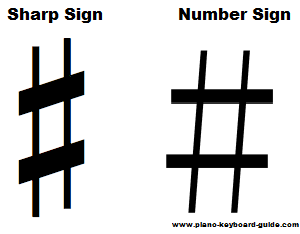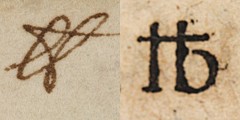#octothorpe
Most of my life, I called it the “number sign.” But it was also known as the “pound sign.” And, today, almost universally thanks to Twitter, the “hash mark” or “hash sign” or “hash tag.”
The backstory isn’t very clear. Some historians think it grew out of a crudely handwritten symbol that 17th century traders used for pound, the measure of weight (Latin: libra pondo), often appearing to have two crosses through the letters. But there isn’t any solid evidence of this so others argue that it grew out of the symbol for the British unit of currency, the Pound Sterling (£). Meanwhile, the symbol # had also come to refer to number, as in #1.
When the early commercial typewriters were developed in the mid-to-late 1800s, the keyboards didn’t have a # sign on the keys, but by the early 19th century keyboards became larger, with the ability to shift increasing the number of symbols that could be included. Not to forget that the number sign was also close to the symbol for a sharp in musical notation. (Both have two sets of parallel double-lines, but the sharp sign has two slanted parallel lines that rise from left to right.) 
Then Bell Labs invented the touch tone (push-button) phone in the early ’60s. No longer limited by the circular rotary dial, more keys could be added once engineers could agree upon how to lay out the keys. There were many possibilities…
Finally, to create the even, three-by-four rectangle, the engineers added two extra buttons: the asterisk (*) and pound sign (#). These were intended to allow people to use automated services as phone systems became computerized. (Not entirely a good thing. No more talking to a person; it was soon to become: To return to the main menu, press pound).
But because the pound sign didn’t have a consistent name, one of the engineers, Don Macpherson, decided to name it himself, adding a quixotic element to the whole thing. He thought the company needed a scientific-sounding name since Bell was selling a complicated new technology to clients. (I’m trying to follow this logic… and having trouble.) Furthermore, Macpherson claimed, “octo” represented the eight lines that come off the sides of the keypad and “thorpe” was a tribute to the Indigenous-American Olympic gold medalist, Jim Thorpe.
So, it was called octothorpe — was it really? I still knew it as the number sign and never heard anyone call it “octothorpe.” Then, in 2007, when software developer Chris Messina developed the idea of using the octothorpe to tag posts on the new micro-blogging site, Twitter, and search for other posts on the same subject. The hashtag was born. For example: #enoughaboutoctothorpe.

